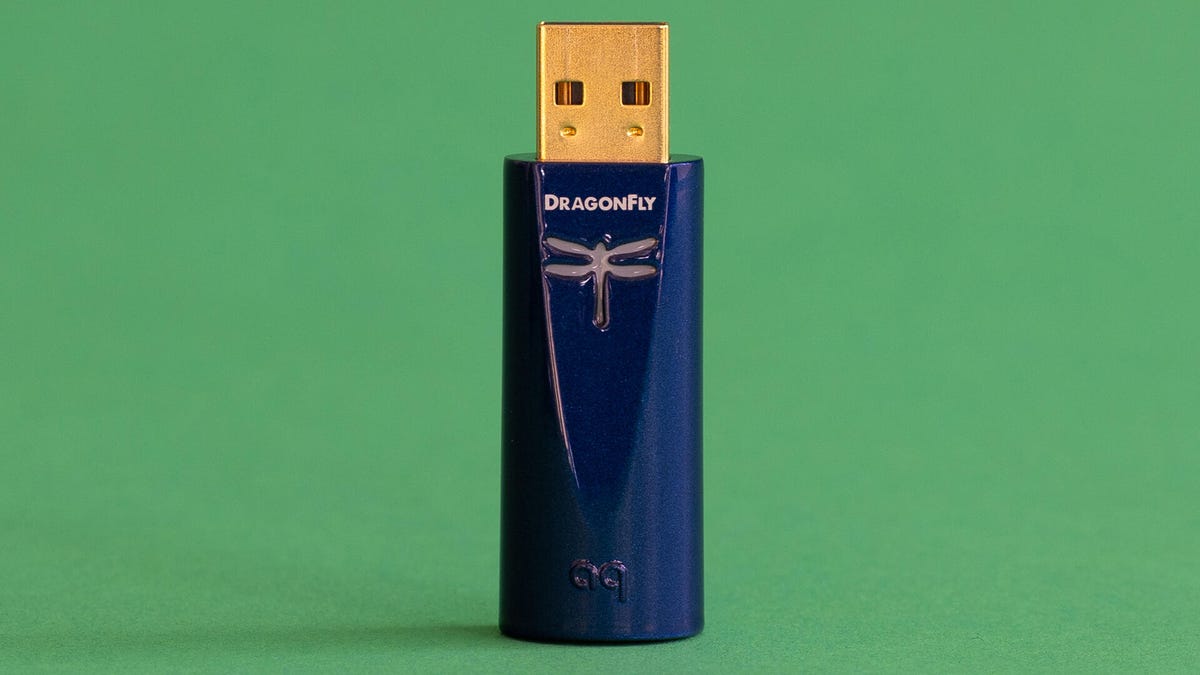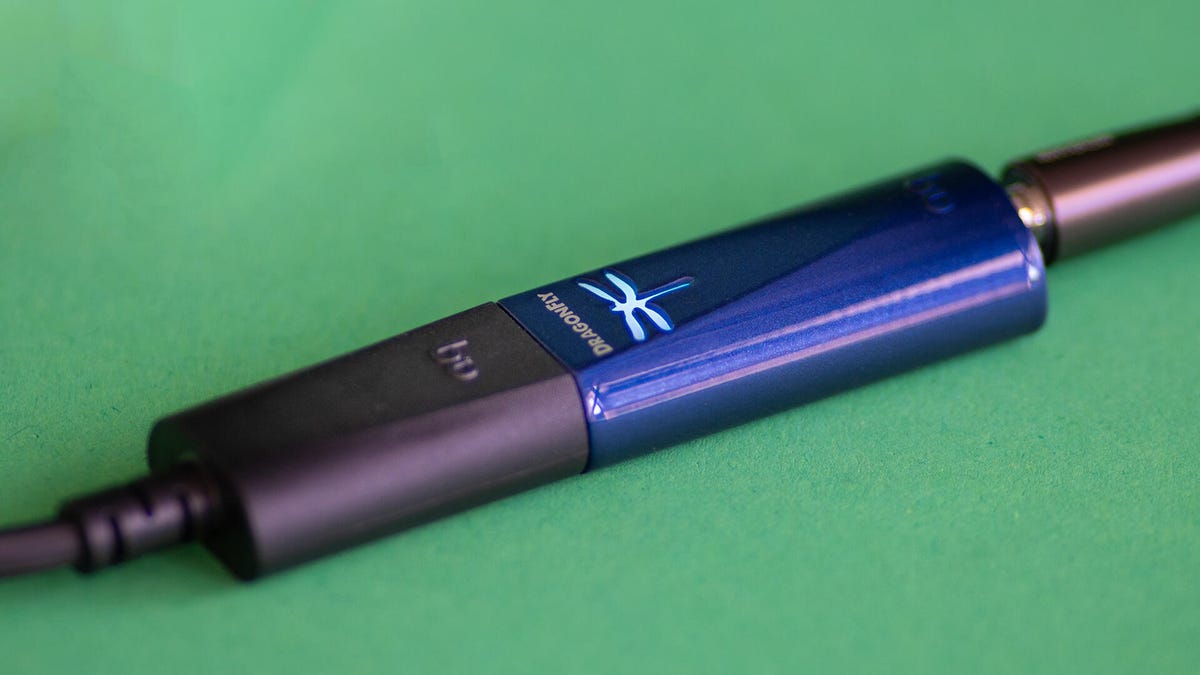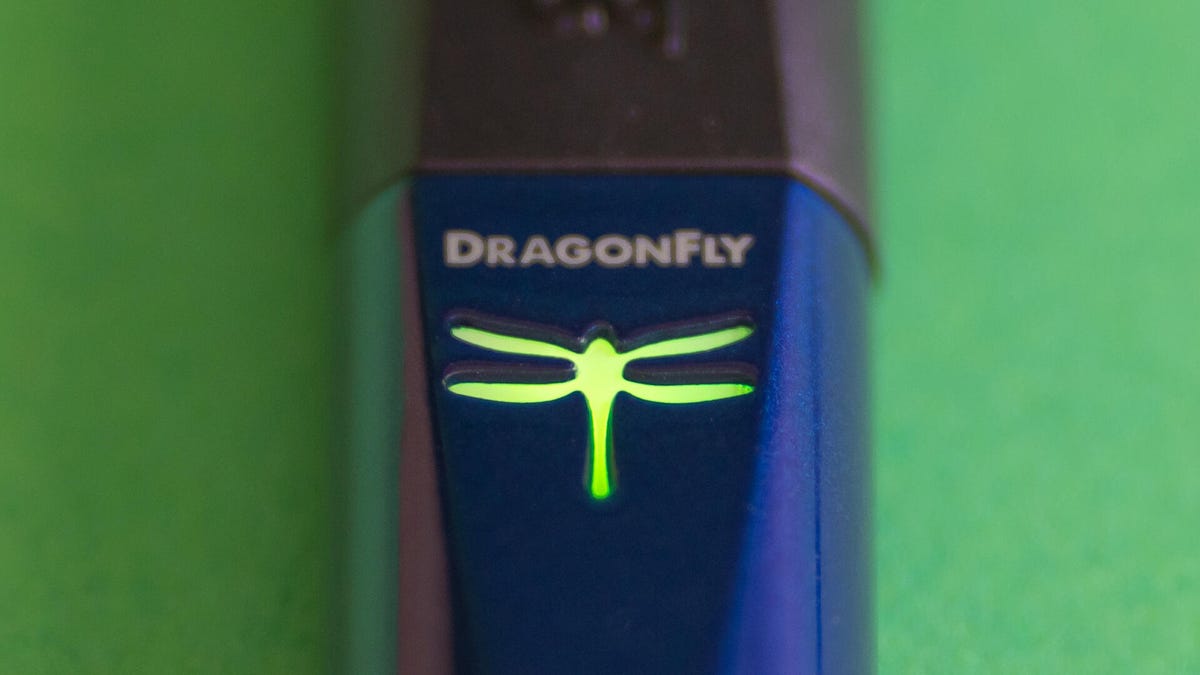A portable headphone amp might seem anachronistic in this age of Bluetooth headphones. Why be tethered to wires when wireless is the future? While many BT headphones offer impressive sound quality, they’re inherently limited in their design. Built-in batteries and electronics take up space and add to the overall cost. Many manufacturers of wired headphones and earbuds offer models that, in theory, offer similar prices as BT models but with better or more drivers. Others have models that have drivers that are too power-hungry to be driven well by built-in batteries.
<div id="46a78c16-a342-4cb1-80aa-5a4210253792" edition="us" editorsday="1" editorsmonth="01" editorsyear="2024" editorsdate="2024-01-02T01:55:43.893Z" innovationday="1" innovationmonth="01" innovationyear="2024" innovationdate="2024-01-02T01:55:43.893Z" techobjectinfo="{}" usepricing="true" data-key="reviewcard__46a78c16-a342-4cb1-80aa-5a4210253792" position="NaN" embeddedimages="[{"id":"5baa1384-c798-45aa-a0bf-3908ab54ec1b","filename":"audioquest-dragonfly-cobalt-3-of-6.jpg","dateCreated":{"date":"2024/01/30"},"alt":"A closeup of the DragonFly Cobalt.","credits":"Geoffrey Morrison/CNET","caption":"
The Cobalt is about the size of a thumb. \"A\" thumb but perhaps not \"your\" thumb.
","width":"1920","height":"1080"},{"id":"23531822-e718-48fc-b594-528c701207cd","filename":"audioquest-dragonfly-cobalt-2-of-6.jpg","dateCreated":{"date":"2024/01/30"},"alt":"The Cobalt with its included USB-C adapter.","credits":"Geoffrey Morrison/CNET","caption":"
The Cobalt with its included USB-C adapter.
","width":"1920","height":"1080"},{"id":"7921f90c-8b0b-4e00-ad9e-0c3d2dcdb2fd","filename":"audioquest-dragonfly-cobalt-4-of-6.jpg","dateCreated":{"date":"2024/01/30"},"alt":"The AudioQuest DragonFly Cobalt on a green background.","credits":"Geoffrey Morrison/CNET","caption":"
The DragonFly Cobalt connected and glowing light blue, which indicates a 96kHz sampling rate.
","width":"1920","height":"1080"},{"id":"2ffa5e21-80e0-4811-8303-bb763a7695bb","filename":"audioquest-dragonfly-cobalt-1-of-6.jpg","dateCreated":{"date":"2024/01/30"},"alt":"audioquest-dragonfly-cobalt-1-of-6","credits":"A closeup of the headphone jack of the AudioQuest DragonFly Cobalt.","caption":"
To connect headphones with the larger 1/4-inch connector you’ll need a separate adapter or adapter cable.
","width":"1920","height":"1080"},{"id":"98d5b9a6-1212-4438-bf00-aff78d30a794","filename":"audioquest-dragonfly-cobalt-6-of-6.jpg","dateCreated":{"date":"2024/01/30"},"alt":"An AudioQuest DragonFly Cobalt glowing green.","credits":"Geoffrey Morrison/CNET","caption":"
The green dragonfly on the DragonFly indicates a 44.1kHz sampling rate.
","width":"1920","height":"1080"}]” imagecredit=”Geoffrey Morrison/CNET” imagecaption=”
The AudioQuest DragonFly Cobalt.
” contenttype=”News” getlisticleindex=”function () { [native code] }” filtershortcodetypes totalfilteritems=”0″ pagelayout=”Default – Article Page w/ original publish date” primarytopicslug=”headphones” tagslugs tocheadlineitem=”[object Object]” topics=”[object Object]”>

7.5
AudioQuest DragonFly Cobalt
You could power these wired headphones from any headphone jack, but built-in ports like that rarely have much power. Instead, a portable headphone amp can give audiophile headphones the juice they need without tying you to a chair or desk.

The Cobalt is about the size of a thumb. “A” thumb but perhaps not “your” thumb.
- DAC Chip: ESS ES9038Q2M
- Max sampling rate/frequency: 24-bit/96kHz
- Amp chip: ESS Sabre 9601
- Power: “2.1 volts”
The Cobalt looks like a USB thumb drive, if anyone remembers those. Included is a short dongle that converts the USB-A on the Cobalt to USB-C for use with phones and many laptops. To connect to Apple products you unsurprisingly need a special adapter, which is available separately. You also get a small pleather case, which is a nice touch though I don’t imagine it will get much use.
Inside the Cobalt is a ESS Sabre 9601 headphone amp and a ESS ES9038Q2M DAC. The Cobalt maxes out at 24-bit/96kHz, which is less than some USB DACs. There isn’t a ton of music available at higher rates, but there is some. Personally I think there is value in higher-than-CD sampling rates (16/44.1) but I’m skeptical of anyone who says they can hear a difference between 96 and 192kHz.
The claimed power rating of “2.1 volts” is unclear and practically misleading. Nearly all amplifiers are rated in watts and it’s easily the most recognizable audio spec. Watts is volts times amps, and no device like this is putting out anything close to 1 amp. So no doubt “2.1” is far more impressive a number than whatever milliwatts this (or any, to be honest) headphone amp provides. For comparison, the older and cheaper DragonFly Black had a claimed 1.2 volts while the similar iFi Go Link (review coming soon), claims 70mW into 32 ohms and and 2.05V into 600 ohms (which converts to 7mW).
The dragonfly on the DragonFly lights up different colors with different sampling rates: Red for Standby, green for 44.1kHz, blue for 48kHz, yellow for 88.2kHz, light blue for 96kHz, and purple for MQA. At least, that’s the theory. Rarely did this match up with the claimed sampling rates on content I tested with my Pixel 7. It matched better, or at least faster, with my Sony NW-A306 portable media player.
Sound

The DragonFly Cobalt connected and glowing light blue, which indicates a 96kHz sampling rate.
With the Cobalt vs the (admittedly anemic) desktop PC’s headphone jack using the LCD-3s, the sound via the Cobalt sounded fuller at the same volume level. Percussion had a tighter, more immediate attack. Most notably, I was able to get a much higher volume with better bass via the Cobalt. With the PC’s volume control all the way up, I could get a sound that was a little higher than typical listening volume. With the Cobalt, that same approximate volume was achieved with a setting around 60, with 75 being plenty loud and 100 being beyond comfortable. Not bad for a thumb drive-sized device and huge planar magnetic headphones. Admittedly, the sound at maximum wasn’t as clean as it was at lower volumes.
With the Sendy Apollos there was better clarity with the Cobalt compared to the computer’s built-in headphone jack. Switching to my phone’s output via the dongle, the Apollos had fuller bass when played through the Cobalt, and sounded more open. Once again, volume was the biggest difference. With the volume control all the way up on my phone, the Apollos were just above what I’d call a normal listening volume. Through the Cobalt, however, maximum volume was louder than I’d listen to for any length of time.

The green dragonfly on the DragonFly indicates a 44.1kHz sampling rate.
There are two questions that arise from a product and review like this. First, does it improve the sound over a reasonable baseline? Yes, with any hard-to-drive headphone the Cobalt will absolutely sound better than a headphone jack and cheap dongle. Even many easier-to-drive headphones will likely sound at least a little better (or at the very least, louder).
Second, does it perform well enough to justify its price? That’s a bit harder to say. Do you have headphones that either need an amp or will sound better with one? Do your usual sources limit the performance of your headphones? Since most computers and phones (dongle required or not) have terrible headphone amplifiers, the answer to that latter question is often yes. To the question of price, the DragonFly seems a little expensive. There are a wider variety of amp/DAC dongles like the Cobalt on the market now compared to when the DragonFlys first took flight (pun intended), and many are a lot less money. We’ll be checking some out soon.
Lastly, if you don’t have headphones that can justify the price of a $200 accessory, this shouldn’t be your first purchase. It’s not going to make $50 headphones sound like $500 headphones. If you’re only ever listening to amp-deserving headphones while seated in one place, the hip-dac2 has a little better sound at the cost of portability and overall convenience (the newer hip-dac 3 has a more user-friendly dual USB-C connection).
That all said, if you do fit in the above-outlined niche, I will say the Cobalt impressed me more than I expected for its size. For something smaller than a thumb it definitely improved the sound of some great-sounding headphones in a way that was exceptionally portable.
As well as covering audio and display tech, Geoff does photo tours of cool museums and locations around the world, including nuclear submarines, massive aircraft carriers, medieval castles, epic 10,000-mile road trips, and more.
He wrote a bestselling sci-fi novel about city-size submarines, and also Budget Travel for Dummies. You can follow him on Instagram and YouTube.

